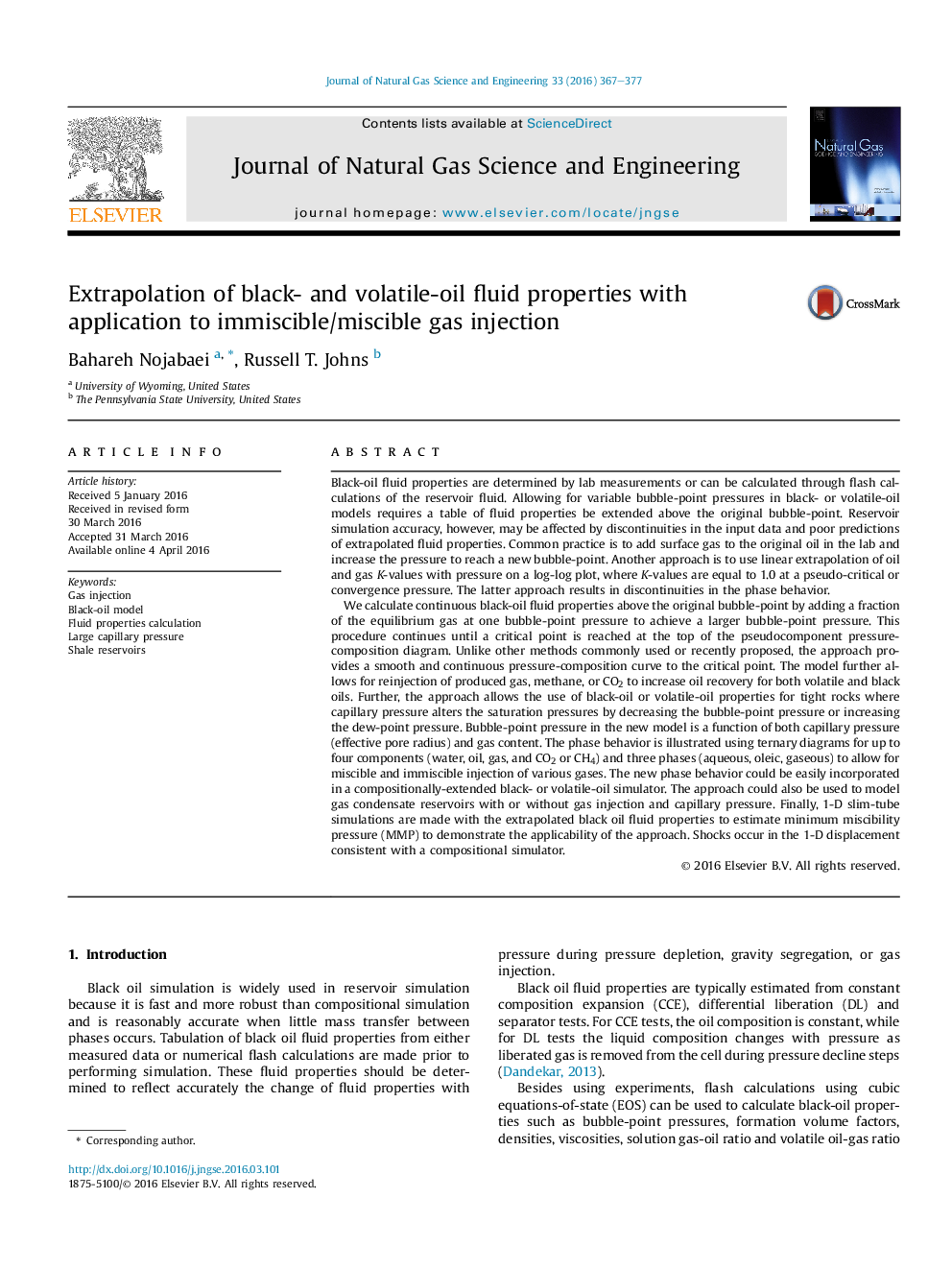| کد مقاله | کد نشریه | سال انتشار | مقاله انگلیسی | نسخه تمام متن |
|---|---|---|---|---|
| 1757075 | 1523008 | 2016 | 11 صفحه PDF | دانلود رایگان |

• The approach gives continuous extrapolation of all black- and volatile-oil properties by adding small increments of equilibrium bubble-point gas to the critical point..
• An increase in capillary pressure decreases the bubble-point pressure at constant oil composition, while an increase in the solution gas-oil ratio increases the bubble-point pressure at constant capillary pressure.
• The new model could be used for both multicontact miscible and immiscible gas injection by matching the MMPs for the key binary endpoints. No flash calculations with a cubic equation-of-state are needed during simulation.
Black-oil fluid properties are determined by lab measurements or can be calculated through flash calculations of the reservoir fluid. Allowing for variable bubble-point pressures in black- or volatile-oil models requires a table of fluid properties be extended above the original bubble-point. Reservoir simulation accuracy, however, may be affected by discontinuities in the input data and poor predictions of extrapolated fluid properties. Common practice is to add surface gas to the original oil in the lab and increase the pressure to reach a new bubble-point. Another approach is to use linear extrapolation of oil and gas K-values with pressure on a log-log plot, where K-values are equal to 1.0 at a pseudo-critical or convergence pressure. The latter approach results in discontinuities in the phase behavior.We calculate continuous black-oil fluid properties above the original bubble-point by adding a fraction of the equilibrium gas at one bubble-point pressure to achieve a larger bubble-point pressure. This procedure continues until a critical point is reached at the top of the pseudocomponent pressure-composition diagram. Unlike other methods commonly used or recently proposed, the approach provides a smooth and continuous pressure-composition curve to the critical point. The model further allows for reinjection of produced gas, methane, or CO2 to increase oil recovery for both volatile and black oils. Further, the approach allows the use of black-oil or volatile-oil properties for tight rocks where capillary pressure alters the saturation pressures by decreasing the bubble-point pressure or increasing the dew-point pressure. Bubble-point pressure in the new model is a function of both capillary pressure (effective pore radius) and gas content. The phase behavior is illustrated using ternary diagrams for up to four components (water, oil, gas, and CO2 or CH4) and three phases (aqueous, oleic, gaseous) to allow for miscible and immiscible injection of various gases. The new phase behavior could be easily incorporated in a compositionally-extended black- or volatile-oil simulator. The approach could also be used to model gas condensate reservoirs with or without gas injection and capillary pressure. Finally, 1-D slim-tube simulations are made with the extrapolated black oil fluid properties to estimate minimum miscibility pressure (MMP) to demonstrate the applicability of the approach. Shocks occur in the 1-D displacement consistent with a compositional simulator.
Journal: Journal of Natural Gas Science and Engineering - Volume 33, July 2016, Pages 367–377